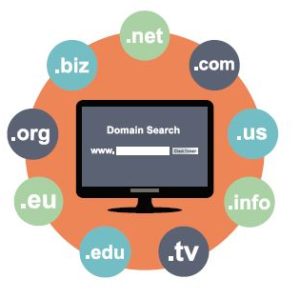By Corinne Cath
This post originally appeared on March 14th on the website of Article 19. Watch out for the upcoming report and RSVP here for our discussion on the topic in DC on March 23rd.
A breaking headline in a tweet, a presidential inauguration streamed live on social media, and the latest developments in a revolution shared with the world in a blog. These are but some of the examples of media developers using the Internet to disseminate information and exercise their right to freedom of expression.
The Internet was not designed to be primarily a mechanism for news distribution. However, in many countries Internet platforms are now the primary source of news and information. In places with extremely closed media environments, the Internet is often the only way for individuals to access independent media. Additionally, even for individuals who still depend on television, radio, and newspapers for news, the journalists who supply content for those outlets, in most cases, depend on the Internet to collect background information and to communicate with sources. Thus, the policies that guide the functioning of the Internet will undoubtedly impact both the dissemination of news as well as the reporting capabilities of journalists.
The global nature of the Internet sets it apart from older communications technologies, which are more easily regulated on a national or even local level. The decentralized nature of the Internet is very beneficial to freedom of the press because it has made it more difficult for governments to censor content. However, decentralization also means that there is a complex web of distributed Internet governance bodies (IGBs) with distinct purviews and different operating procedures that coordinate the various international standards that enable the Internet to operate as a truly global network.
The current multi-stakeholder Internet governance arrangement is unique in that it allows civil society to directly partake, on relatively equal footing with other stakeholders, in the creation of the policies that govern the Internet. This sets it apart from multilateral governance bodies in which only sovereign governments can participate. Thus, rather than lobbying state actors to act, civil society can actively shape the policies themselves. However, few civil society actors participate in the various IGBs where Internet policy gets made. This is especially true for the media development community. ARTICLE 19 and CIMA believe this needs to change. Otherwise, private corporations and governments, some of them openly hostile to open news and information environments, will drive the future evolution of the Internet. They will steer it in a direction that suits their commercial and political needs, with limited considerations for public interest concerns like freedom of expression, source protection, and media pluralism.
 The media development community has an important perspective to bring to the table when it comes to Internet governance. In particular, the emphasis on extending access to media in the Global South, promoting a plurality of voices in the public sphere, ensuring technical resilience and universal availability of news and information platforms, and safeguarding freedom of expression, association, and privacy online are important principles that need championing in Internet Governance Bodies. The media development community’s experience fostering sustainable media ecosystems needs to be used globally, in terms of thinking about the future of the Internet.
The media development community has an important perspective to bring to the table when it comes to Internet governance. In particular, the emphasis on extending access to media in the Global South, promoting a plurality of voices in the public sphere, ensuring technical resilience and universal availability of news and information platforms, and safeguarding freedom of expression, association, and privacy online are important principles that need championing in Internet Governance Bodies. The media development community’s experience fostering sustainable media ecosystems needs to be used globally, in terms of thinking about the future of the Internet.
There are many concrete Internet governance debates taking place right now in which the media development community could make meaningful contributions. But in the forest of Internet governance bodies, it can be difficult to see the trees. Which is why ARTICLE 19 and CIMA have jointly developed a guidebook for the media development community on Internet governance. The guidebook – entitled Media Development in the Digital Age: Five Ways to Engage in Internet Governance – will be launched March 23, 2016.
The guidebook outlines the five most prominent IGBs and explains key policies currently being debated that are relevant to the media development community. We do not aim to give an exhaustive overview of all the relevant discussions. Rather, the issues discussed are selected to demonstrate the direct link between media development work and Internet governance. The report also explains the various opportunities for civil society actors to become more involved at these IGBs, encouraging more people with a media development background to participate and advocate for policies that will benefit our global media ecosystem.
Internet governance decisions are having a more pronounced and immediate impact on the media environment. The question then for the media development community is not whether to get involved in Internet governance, but when and how. This guidebook will present some concrete answers to these questions.
Corinne Cath works for ARTICLE 19’s Team Digital.


Comments (0)
Comments are closed for this post.